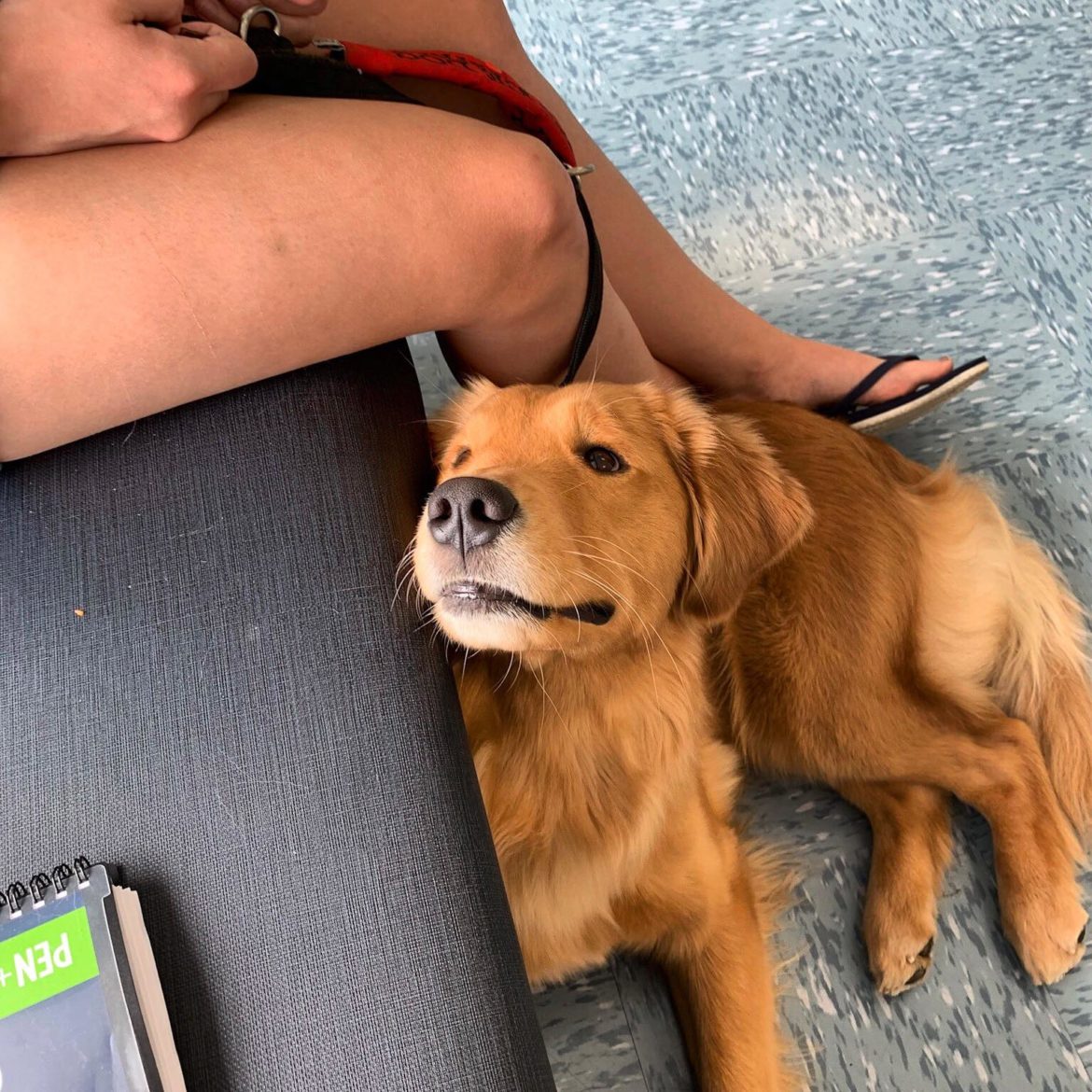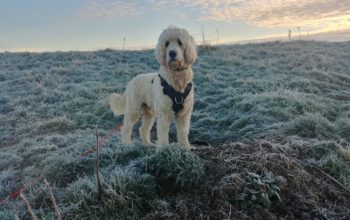Training Tips: When You’re Short On Time
SOME IDEAS FOR HOW TO CRAM DOG TRAINING INTO A BUSY SCHEDULE, WITHOUT EVEN HAVING TO REALLY TRY! AND BONUS – BY DOING THIS, YOU CAN INCREASE YOUR BOND WITH YOUR DOG AND PRACTISE TRICKS & TASKS IN A VARIETY OF ENVIRONMENTS.
Author: Dory Adelie
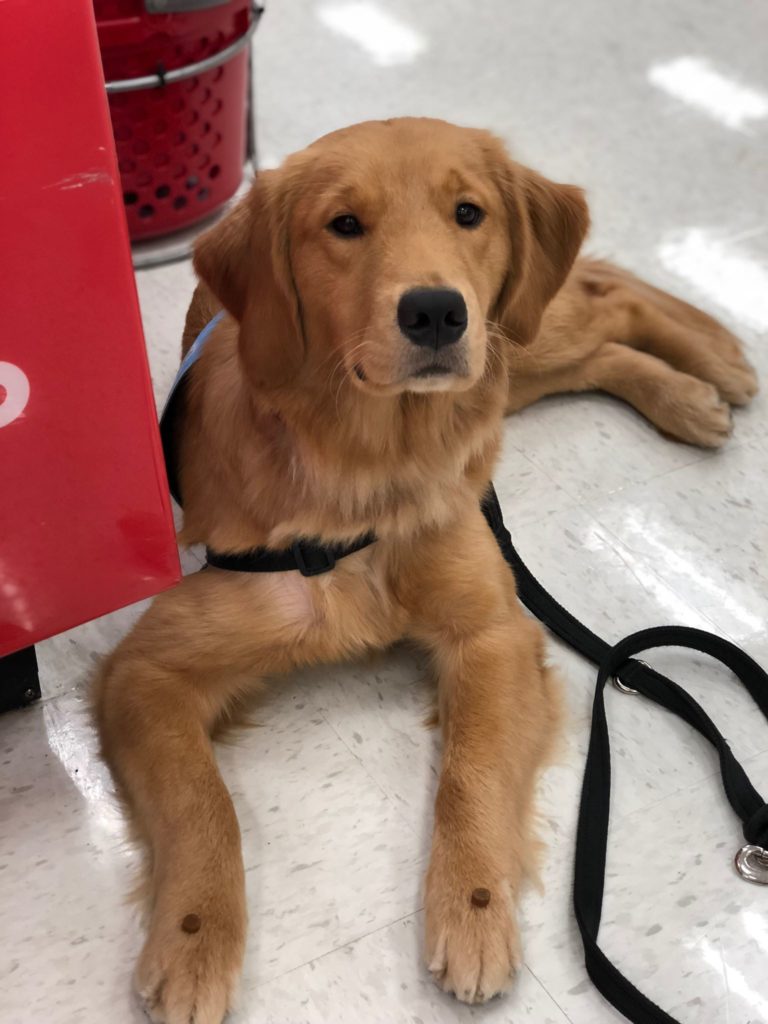
Sometimes life gets busy and whether it be with work, family life, socialising, appointments or illness, it can be difficult to keep up with things that you would ideally maintain – like dog training. This particularly becomes a big concern when you are training your own Assistance Dog – it can lead to hours of fretting and panic. But you don’t have to worry if you are going through a period of time where it’s a struggle to put aside time for a dedicated training session. There are some great ways to do training with your dog when you’re short on time.
NOTE: These are not a substitute for dedicated training time with your pup where you pay them 100% attention and new tricks and tasks should be taught with full attention. Instead these are a way to sneak a bit of training in when you otherwise wouldn’t get any done, and also to make sure that your dog can generalise commands and tasks in different environment. These are useful to do whatever stage of training you are at with your dog (some more than others) and can still be good practice for fully trained working dogs.
IDEAS
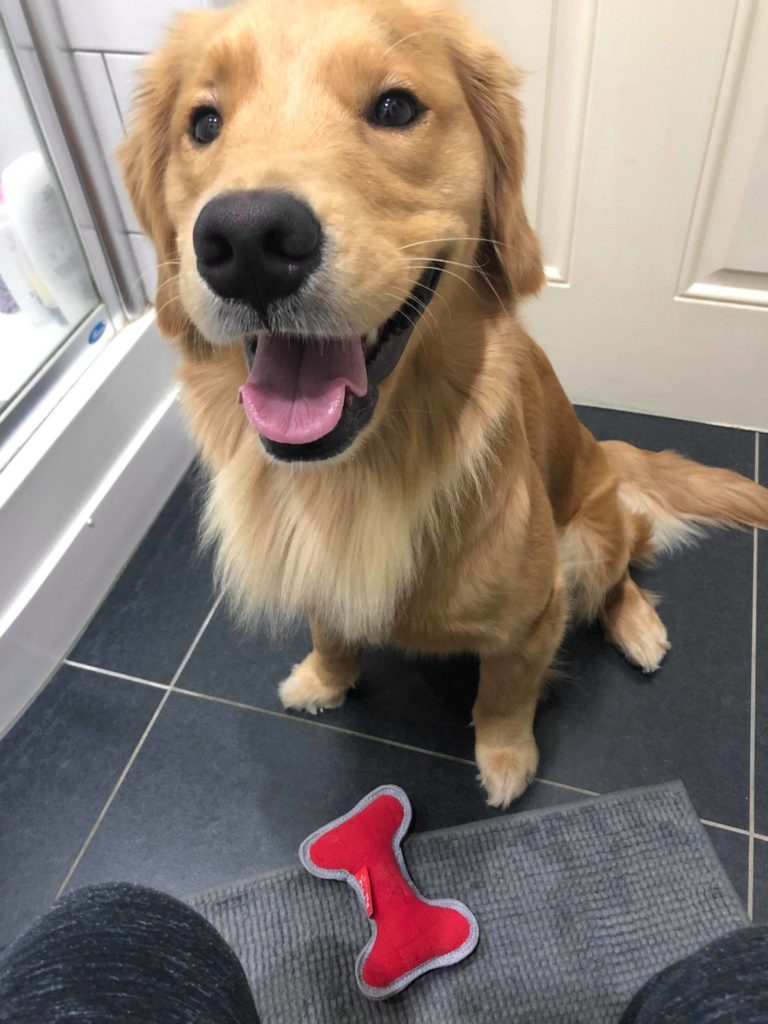
- Using the bathroom – take your dog in with you, practise basic sit/down/stand, nose-to-hand touches, chin, paw, anxiety responses (e.g. sighing/sniffing), behaviour interruptions, retrieval skills/picking up items, even paws up into Deep Pressure Therapy (using upper body on thighs)
- In a queue – practice blocking/positional commands, touch game (nose to hand), holding items, anxiety/behaviour interruptions and responses (e.g. leg shaking when standing)
- Sitting waiting (on a seat) – practice under/tuck, focus (see cover image of this post), practice any commands if you have space around you (e.g. sit/bow/back/spin etc.), retrieving dropped items
- Sitting waiting (on the floor) – practice DPT, anxiety responses, behaviour interruptions, any commands nearby if you have space around you, which hand has the treat, practice leave it
- Making food – work on boundaries and settling e.g. “in your place”/maintaining a down stay in a specific spot (return them to the spot if they leave it), practice leave it with/without your back turned, practice verbal commands only
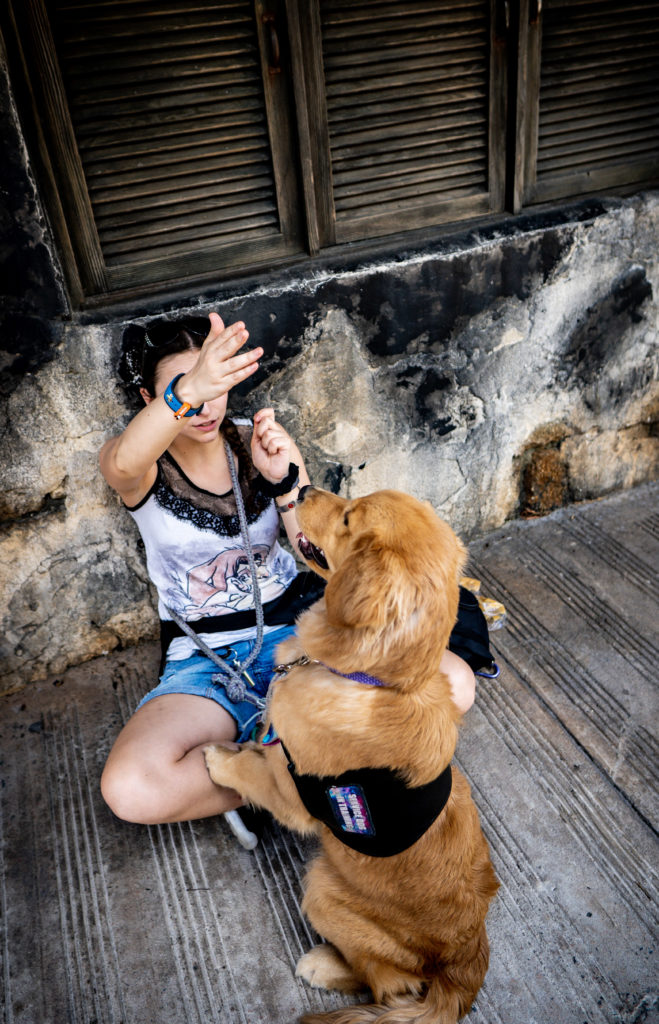
Some of these may seem incredibly simple or too easy for the stage that your dog is at, but remember that it is always beneficial to reinforce the basics, and practice them in different situations, with/without distractions, with/without treats, with verbal only commands, with hand signals only, without being observed (it can help to use your phone with the camera open on selfie mode so you can watch the dog over your shoulder).
Whatever and however you choose to practise – these sessions can end up being anything from 2 minutes to 20 minutes and can vary each time – remember that is valuable time spent with your dog, bonding, practising their skills and strengthening their ability. Don’t underestimate the power of this. And remember to still mark and reward as you would in training sessions – you might just choose a different reward e.g. affection instead of treats in the bathroom!


